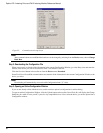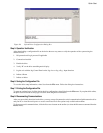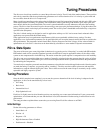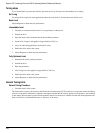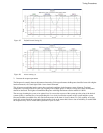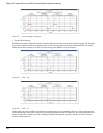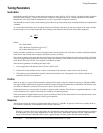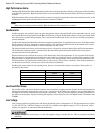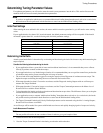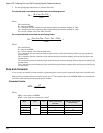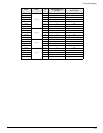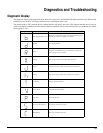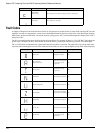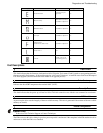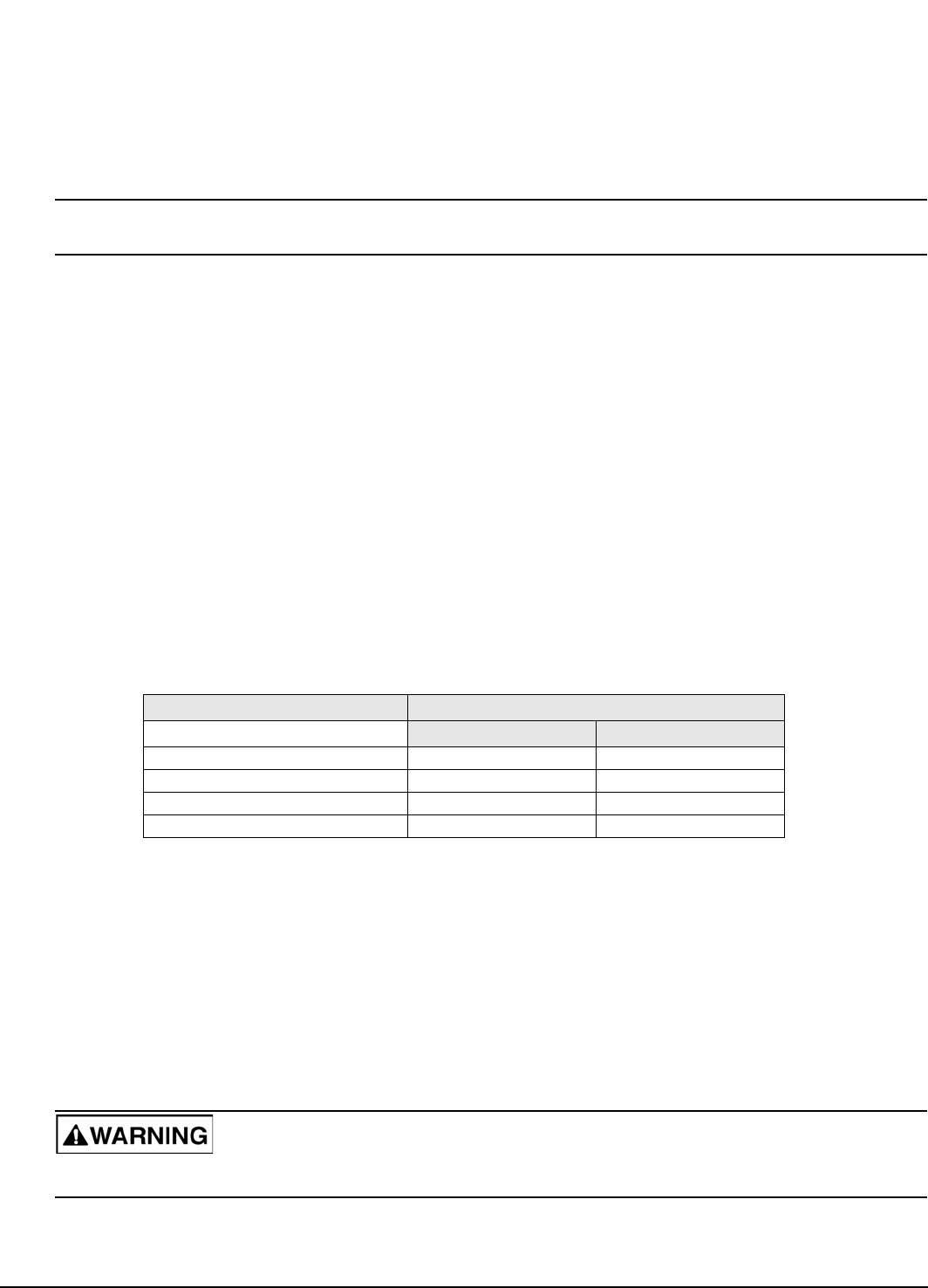
104
Epsilon EP-I Indexing Drive and FM-2 Indexing Module Reference Manual
High Performance Gains
Enabling High Performance Gains fundamentally affects the closed loop operation of the drive and greatly modifies the effect
of the Response parameter. High Performance Gains are most beneficial when the Inertia Ratio and Friction parameters are
accurate.
High Performance Gains, when enabled, make the system less forgiving in applications where the actual inertia varies or the
coupling between the motor and the load has excessive windup or backlash.
Note
When using an external position controller, High Performance Gains should not be enabled.
Feedforwards
Feedforward gains are essentially open loop gains that generate torque commands based on the commanded velocity, accel/
decel and the known load parameters (Inertia Ratio and Friction). Using the feedforwards reduces velocity error during steady
state and reduces overshoot during ramping. This is because the Feedforwards do not wait for error to build up to generate
current commands.
Feedforwards should be disabled unless the absolute maximum performance is required from the system. Using them reduces
the forgiveness of the servo loop and can create instability if the actual inertia and/or friction of the machine varies greatly
during operation or if the Inertia Ratio or Friction parameters are not correct.
The internal feedforward velocity and acceleration gains are calculated by using the Inertia Ratio and Friction parameters.
The feedforward acceleration gain is calculated from the Inertia Ratio parameter and the feedforward velocity gain is
calculated from the Friction parameter.
When Feedforwards are enabled, the accuracy of the Inertia Ratio and Friction parameters is very important. If the Inertia
Ratio parameter is larger than the actual inertia, the result would be a significant velocity overshoot during ramping. If the
Inertia parameter is smaller than the actual inertia, velocity error during ramping will be reduced but not eliminated. If the
Friction parameter is greater than the actual friction, it may result in velocity error or instability. If the Friction parameter is
less than the actual friction, velocity error will be reduced by not eliminated.
Feedforwards can be enabled in any operating mode, however, in certain modes they do not function. These modes are
described in table below.
Low Pass Filter Group
The Low Pass Filter will reduce machine resonance due to mechanical coupling and other flexible drive/load components by
filtering the command generated by the velocity loop. A check box on the Tuning view enables a low pass filter applied to
the output of the velocity command before the torque compensator. The low pass filter frequency parameter defines the low
pass filter cut-off frequency. Signals exceeding this frequency will be filtered at a rate of 40 dB per decade. The default value
is 600Hz.
Line Voltage
Line Voltage specifies the applied power and adjusts the internal gains to compensate for it. This parameter has two choices
115 Vac and 230 Vac. If the Line Voltage is set to 230 Vac when the actual applied voltage is 115 Vac, the motor will be
slightly less responsive to commands and load disturbances.
The Line Voltage must never be set to 115 Vac if the applied voltage is actually 230 Vac. This can cause drive instability
and failure.
Operating Mode Feedforward Parameters Active
Accel FF Vel FF
Analog Velocity No Yes
Preset Velocity Yes Yes
Pulse/Position No No
Summation No Yes



